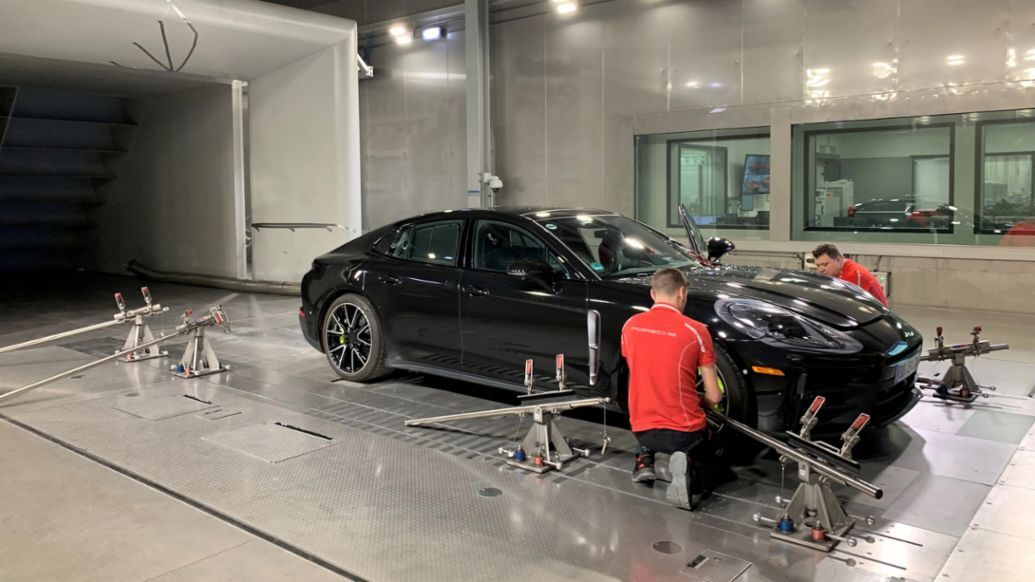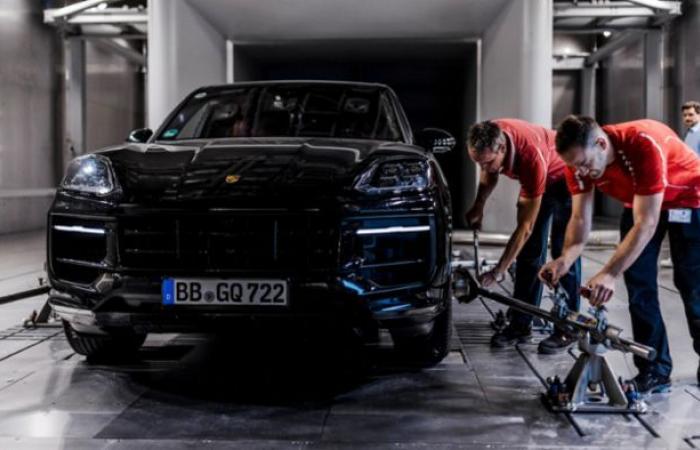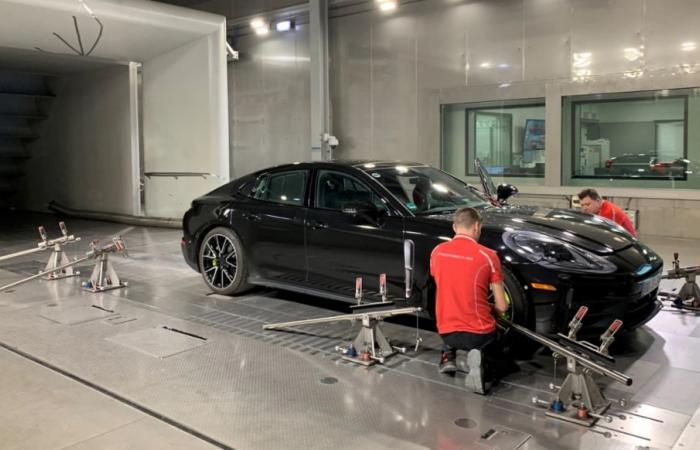From the Arctic Circle to South Africa and from a mountain pass to Dubai: what would normally require a flight around the world can be simulated in a few hours at the Weissach Development Center. In the new Climate Center, which went into operation two years ago, Porsche engineers can reproduce virtually all weather conditions on the planet.
Prototypes exposed to various conditions
One of the engineers at this center is Horst-Uwe Kross. The 51-year-old has been with Porsche AG for ten years and now heads the V&V Thermodynamics Department. “In our new wind tunnel at the Climate Center we can reproduce temperatures ranging from -30 to +50 ° C and rains that can be from very light to a monsoon downpour,” he explains. “We can also simulate wind speeds of up to 250 km/h and solar radiation of up to 1,200 watts per square meter, as well as relative humidity of 5 to 95 percent.”
The overall goal in the climate wind tunnel is to expose the prototypes to the same conditions they would encounter on the roads of the United Arab Emirates or Norway, with the advantage that each simulation on the vehicle can be reproduced exactly. “In a natural environment the position of the sun changes and the temperature of the road surface rises or falls; in the climatic wind tunnel, however, we can create exactly the same conditions for the vehicle at all times and thus measure even the most minimal changes,” adds Kross.
What is tested in the climatic wind tunnel
In the climatic wind tunnel, Kross and his colleagues test, for example, the cooling circuit of a vehicle, the behavior of the battery in different conditions and the resistance of components in different wind situations. Periodic tests also include exposing the car to an outside temperature of 40°C and then checking whether the comfort temperature of 22°C is maintained inside. As regards sub-zero levels, the test Common procedures include defrosting the windows and taking steps to quickly reach a comfortable interior temperature after occupants have entered the cold winter vehicle.
“Our goal is to build sports cars that also offer a high level of comfort,” Kross emphasizes. Therefore, he receives from the developers a list of requirements with several hundred points that must be tested in the prototype. In the climate tunnel, not only the effects of environmental influences can be analyzed, but also specific types of use, such as a Cayenne ascending a mountain pass with a trailer or driving in dense urban traffic with stops. and successive startups. By adjusting the resistance of the dynamometer and importing navigation data, each situation can be simulated with great precision. There’s something else Kross would like to see: cornering behavior. This is still a work in progress.

From the test center to the road
Once the vehicle has passed through the climatic wind tunnel, it is also tested in real road traffic. “We cannot rely solely on our modern testing facilities, because road driving is still an important part of the testing procedure. test“, says Kross. “The typical Porsche driving experience is subjective and influenced by the character of each vehicle: only human testers can find out whether a new model has it.” That’s why prototypes are also tested in cold countries and warm, and the results are compared with those of the climatic wind tunnel.
In the future, the demands on Kross and his team will continue to change. The load capacity of the cars will increase considerably and the testing facilities must have the appropriate technical equipment for simulation. Furthermore, they will have to continually adapt as a result of new legal regulations.
“We can imagine the facilities and systems as a big orchestra. Everything has to interact in such a way that we can reproduce exactly the same conditions with an accuracy of up to a tenth of a degree,” says Kross. “With so many components, the human brain reaches its limits: artificial intelligence will help us harmonize the many instruments of the orchestra in a carefully tuned way.”




